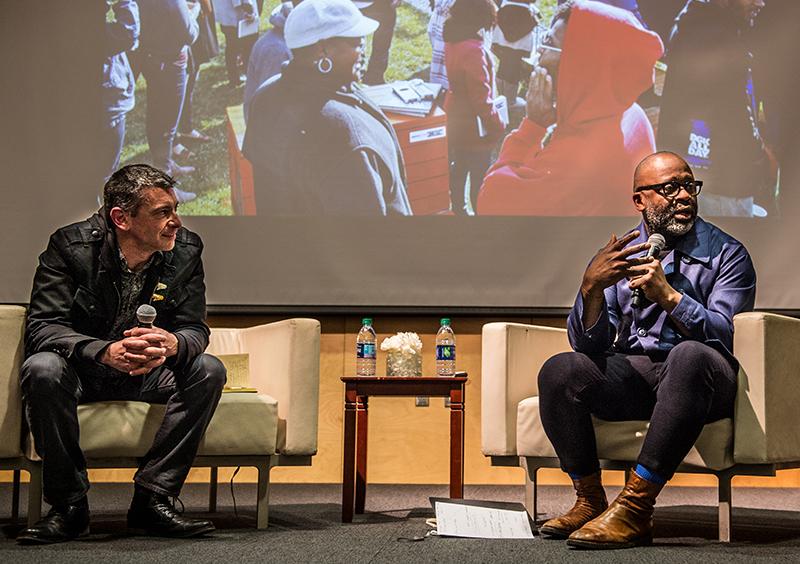Design, architecture and justice intersect
An architect and leader in public interest design, Dan Pitera opened the NewDay Distinguished Speaker Series and R. Allen Eskew Memorial lecture on Monday with a thought-provoking question: “Is beauty a thing that is for all people, or only for some people?”
In answering this question, Pitera, joined by installation artist Theaster Gates, drew together the fields of art, architecture and design in an interactive lecture and interview.
“Design and beauty are acts of social justice,” said Pitera. “Well-designed places are an essential human need, just like food and water.”
“Design and beauty are acts of social justice. Well-designed places are an essential human need, just like food and water.”
— Dan Pitera, architect and leader in public interest design
Both Pitera and Gates pointed out that lack of funding and public resources often prevents the construction of well-designed buildings or parks in low-income neighborhoods, but they also pointed to the larger threat of gentrification.
Often, the introduction of new buildings and the redevelopment of empty lots creates an investment in a neighborhood that draws in more affluent residents, until eventually the property values exceed that which the older residents can afford.
“The reality is that any time great design was happening in our community, my mom didn’t want it there because that meant we were going to get pushed out,” said Pitera, of his own experience. “Everyone wants investment in their community, but they want investment without displacement.”
Gates described his personal investment in a neglected building on the South Side of Chicago. Against the advice of his financial advisers, he developed an abandoned bank building into the Stony Island Arts Bank, a gallery, media archive, library and community center. He believed that investment in the community should serve a vision greater than profit.
He also pointed to the importance of empowering the neighborhood community.
“There is a tension between the person who feels emotionally connected to the building and the person who has the tools and the skills to develop the building,” said Gates. “Can the person with the passion learn the developer’s skills?”
The lecture was jointly sponsored by the Phyllis M. Taylor Center for Social Innovation and Design Thinking, the Tulane School of Architecture and the Newcomb Art Department.

